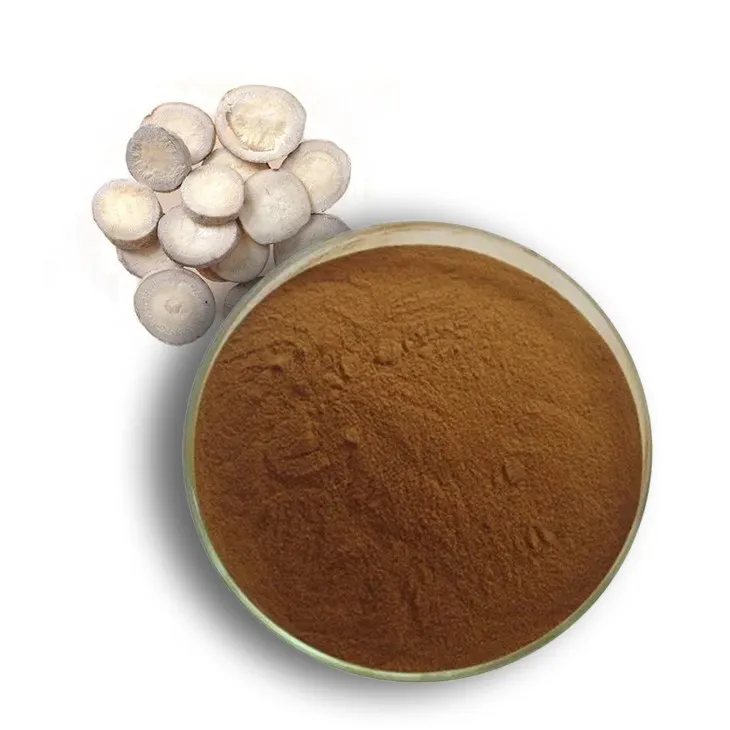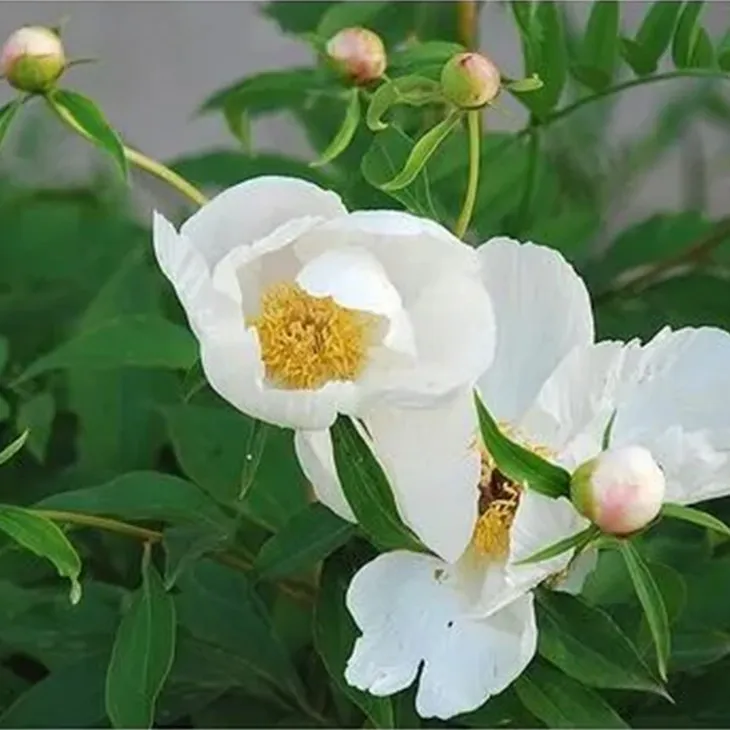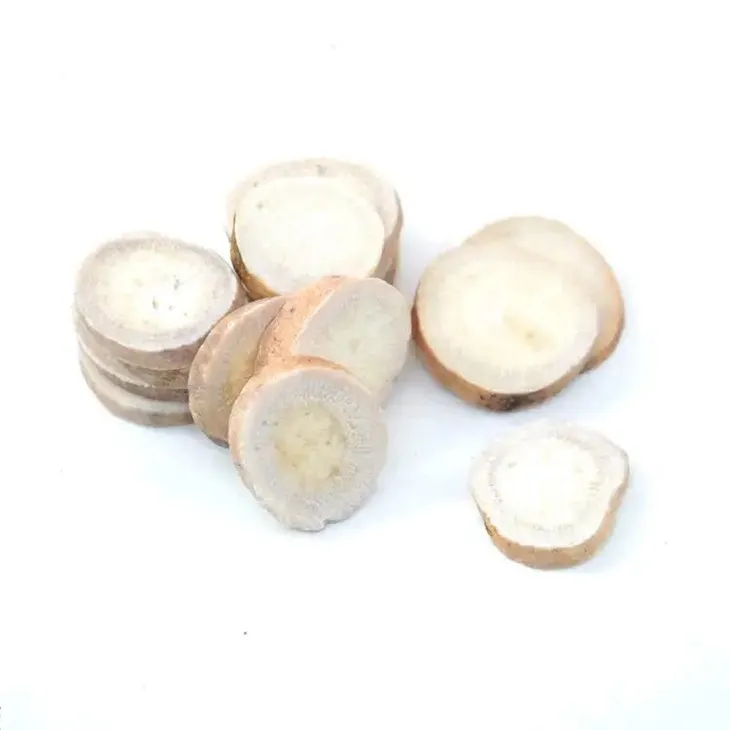- 0086-571-85302990
- sales@greenskybio.com
The Enchanting Origins and History of White Peony Extract
2024-07-04

1. Introduction to White Peony Extract
White Peony Extract has long been a subject of fascination in various fields. It is derived from the elegant white peony flower, which is known for its beauty and grace. This extract has a long - standing history that is deeply connected to traditional medicine, cultural beliefs, and modern industries such as cosmetics.

2. Origins in Traditional Chinese Medicine
2.1. Historical Use
In traditional Chinese medicine (TCM), white peony has been utilized for centuries. It was highly valued by herbalists and physicians in ancient China. TCM practitioners believed that white peony could help regulate the body's internal balance, which was considered crucial for maintaining good health.
2.2. Medicinal Properties
White peony is thought to possess several important medicinal properties. It is believed to have anti - inflammatory effects. This means that it may help reduce inflammation in the body, which is associated with various diseases and health problems. For example, in cases of arthritis, where joint inflammation can cause pain and reduced mobility, White Peony Extract might potentially play a role in alleviating the symptoms.
It also has analgesic properties. Analgesics are substances that can relieve pain. In traditional medicine, white peony was used to treat pain - related ailments. Whether it was headaches, muscle pain, or abdominal discomfort, white peony extract was considered a possible remedy.
Another significant property is its antioxidant effect. Antioxidants are important for protecting the body's cells from damage caused by free radicals. Free radicals are unstable molecules that can cause oxidative stress, which is linked to aging, cancer, and other diseases. By having antioxidant properties, white peony extract may contribute to overall health and longevity.

3. White Peony in Traditional Chinese Medicine Formulations
White peony is often used in combination with other herbs in TCM formulations. For instance, it is a common ingredient in some formulas for treating menstrual disorders. In these combinations, white peony works in harmony with other herbs to regulate the menstrual cycle, relieve menstrual pain, and address issues such as irregular periods.
It is also used in formulations for liver - related problems. In TCM, the liver is considered an important organ for maintaining the body's qi (vital energy) flow. White peony is believed to have a beneficial effect on the liver, helping to soothe and nourish it. By doing so, it can contribute to the overall well - being of the body, as a healthy liver is thought to be essential for good digestion, proper blood circulation, and emotional stability.

4. White Peony Extract in the Cosmetic Industry
4.1. Skin - Nourishing Properties
The use of white peony extract in the cosmetic industry has gained popularity in recent years. One of the main reasons is its skin - nourishing capabilities. The extract is rich in nutrients that can penetrate the skin and provide essential hydration. This helps to keep the skin soft, smooth, and supple. It can also improve the skin's texture, making it look more radiant and healthy.
4.2. Anti - Aging Benefits
White peony extract is also known for its anti - aging benefits. As mentioned earlier, it has antioxidant properties. In the context of skin health, these antioxidants can help combat the signs of aging. They can reduce the appearance of wrinkles and fine lines by protecting the skin cells from free radical damage. Additionally, white peony extract may stimulate collagen production in the skin. Collagen is a protein that is essential for maintaining the skin's elasticity. As we age, collagen production decreases, leading to sagging skin. By promoting collagen production, white peony extract can help keep the skin firm and youthful - looking.

5. Symbolic Significance in Different Cultures
5.1. In Chinese Culture
In Chinese culture, the white peony is a symbol of beauty, elegance, and prosperity. It has been highly regarded in Chinese art, literature, and poetry for centuries. Paintings of white peonies are often seen as a representation of purity and grace. In literature, the white peony is frequently used as a metaphor for beautiful women or as a symbol of noble and refined qualities.
5.2. In Western Culture
In Western culture, while not as deeply ingrained as in Chinese culture, the white peony also holds certain symbolic meanings. It is often associated with love and romance, much like other beautiful flowers. White peonies are sometimes used in weddings and special occasions as a symbol of new beginnings and pure love.
6. Modern Research on White Peony Extract
Modern scientific research has been carried out to further explore the potential benefits of white peony extract. Researchers are interested in validating the traditional claims made about its medicinal properties. Some studies have focused on its anti - inflammatory mechanisms at the molecular level. They are trying to understand how exactly white peony extract interacts with the body's immune system to reduce inflammation.
Other research has been centered on its antioxidant activity. Scientists are looking into the specific types of antioxidants present in white peony extract and how they can be harnessed for better health. In the field of cosmetics, research is being conducted to develop more effective products using white peony extract. This includes optimizing the extraction methods to ensure the highest quality and potency of the extract for skin - care applications.
7. Conclusion
The white peony extract has a rich and diverse history. Its origins in traditional Chinese medicine, its use in the cosmetic industry, and its symbolic significance in different cultures all contribute to its allure. As modern research continues to uncover more about its potential benefits, it is likely that white peony extract will continue to be an important ingredient in various fields, from medicine to cosmetics, and will remain a symbol of beauty and well - being.
FAQ:
What are the main health - enhancing properties of white peony extract?
White peony extract is believed to have anti - inflammatory, analgesic, and antioxidant effects, which are the main health - enhancing properties.
How long has white peony been used in traditional Chinese medicine?
White peony has been used in traditional Chinese medicine for centuries.
Why is white peony extract popular in the cosmetic industry?
White peony extract is popular in the cosmetic industry because it has skin - nourishing and anti - aging capabilities.
What is the symbolic significance of white peony in different cultures?
The symbolic significance of white peony varies in different cultures. However, generally, it adds to the allure of its extract in different cultural contexts.
How is white peony extract obtained?
The process of obtaining white peony extract typically involves extraction methods from the white peony flower. Specific extraction techniques may include solvent extraction or other appropriate methods, but the exact process can vary depending on the intended use and the technology employed by the extractors.
Related literature
- The Traditional Use and Modern Research of White Peony in Herbal Medicine"
- "White Peony Extract: A Comprehensive Review of its Cosmetic and Medicinal Properties"
- "Symbolism of the White Peony in World Cultures"
- ▶ Hesperidin
- ▶ citrus bioflavonoids
- ▶ plant extract
- ▶ lycopene
- ▶ Diosmin
- ▶ Grape seed extract
- ▶ Sea buckthorn Juice Powder
- ▶ Beetroot powder
- ▶ Hops Extract
- ▶ Artichoke Extract
- ▶ Reishi mushroom extract
- ▶ Astaxanthin
- ▶ Green Tea Extract
- ▶ Curcumin Extract
- ▶ Horse Chestnut Extract
- ▶ Other Problems
- ▶ Boswellia Serrata Extract
- ▶ Resveratrol Extract
- ▶ Marigold Extract
- ▶ Grape Leaf Extract
- ▶ blog3
- ▶ Aminolevulinic acid
- ▶ Cranberry Extract
- ▶ Red Yeast Rice
- ▶ Red Wine Extract
-
Tormentil Extract
2024-07-04
-
Rose Hip Extract
2024-07-04
-
Uridine-5'-monophosphate Disodium salt
2024-07-04
-
Black Rice Extract
2024-07-04
-
Gynostemma pentaphyllum extract
2024-07-04
-
Troxerutin
2024-07-04
-
Licorice Root Extract Powder
2024-07-04
-
Tinospora cordifolia extract
2024-07-04
-
Eucommia Ulmoides Extract
2024-07-04
-
Curcuma Longa Extract/Turmeric extract
2024-07-04





















